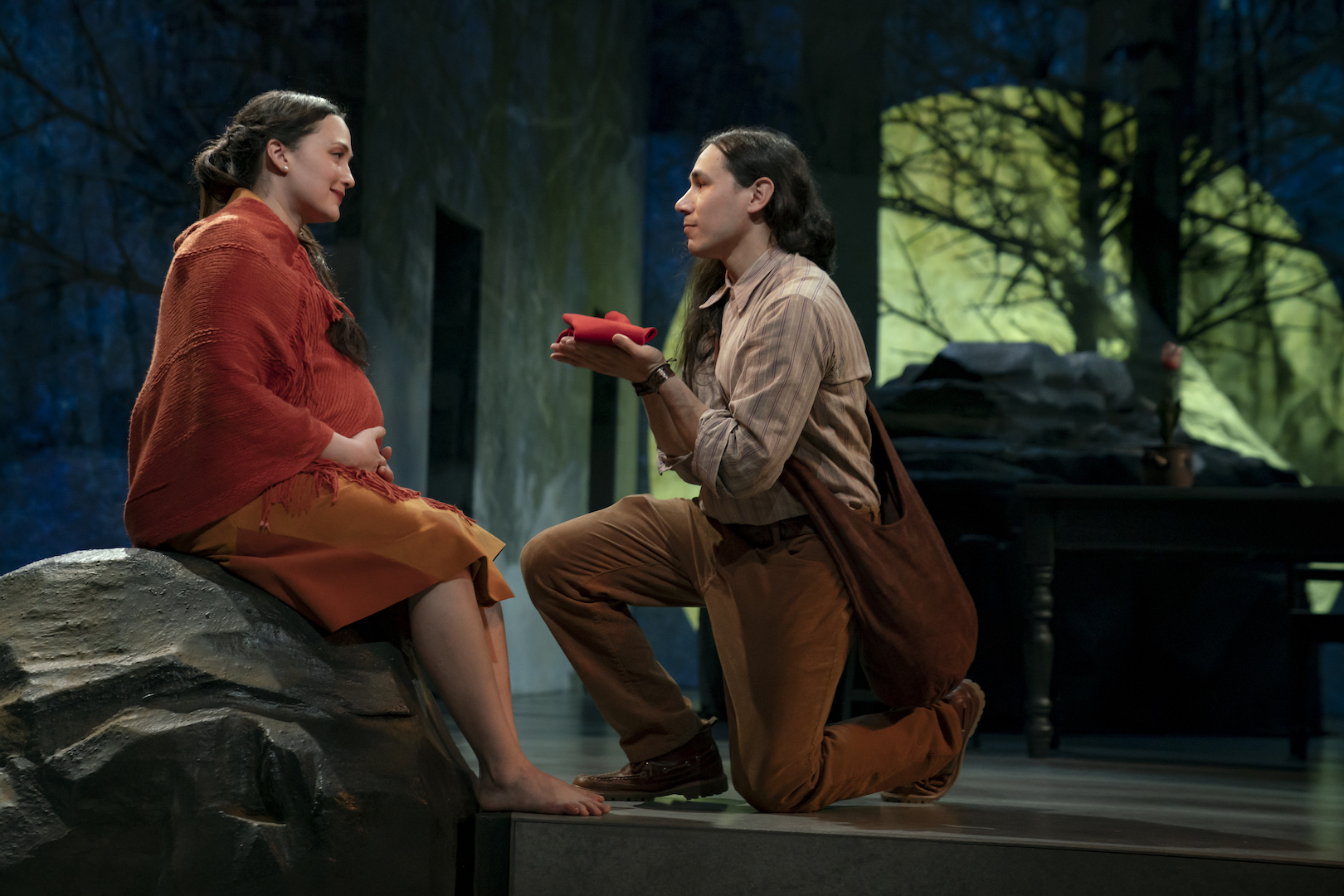
The Yale Repertory Theatre
The 2008 recession began on an island called Manhattan at a place called Wall Street. For many, those names conjure images of a burgeoning megacity and bustling financial center. But what — and who — was there before?
In her play “Manahatta,” playwright Mary Kathryn Nagle tells and retells stories of the infamous island in both past and present. “Manahatta,” the first Native-focused play produced at the Yale Repertory Theater, is on stage until Feb. 15.
The play contains two plotlines. One follows a group of Lenape Native Americans who were coerced into selling their homeland, Manahatta, when the Dutch West India Company colonized the island. The other centers on Jane Snake, a Lenape investment banker in the early 2000s who leaves her home in Oklahoma to pursue a career on Wall Street.
Inspiration for the play came from Nagle’s time at a law firm in New York.
“I would ask people around me, ‘Do you know why this place is called Manhattan?’ And they would say, ‘I don’t know, isn’t it Dutch for something?’” Nagle said in an interview with Shondaland in 2018. “Manhattan” actually comes from the Lenape word “Manahatta,” which means “island of many hills.”
Lily Gladstone, the actor who plays Jane Snake in the present and Le-le-wa’-you in the past, noted that the play’s duality expresses a recognizably Native narrative.
“It’s a really common Indigenous saying that with every action we take we consider seven generations in the future and remember seven generations in the past,” Gladstone said. She added that the play’s nonlinear, “timeless” structure directly represents this idea.
Actors on stage are double-cast, which means that they play two different characters throughout. They switch parts swiftly, sometimes by simply putting on a jacket or changing posture. Both Nagle and Gladstone noted the importance of double-casting, as it reveals common experiences that transcend time and space.
Carla Rae, who plays Jane’s mom, Bobbie, and Mother, cast the show’s duality as a manifestation of intergenerational trauma.
“Bobbie has had some trauma, so she’s got this crust,” Rae said. “You wonder where it’s coming from.” Rae also drew on her own life experience to understand the relationship between the characters she plays, noting that “they are both strong maternal figures.”
“They want what’s best,” Rae said. “They know what [the Lenape] have done for generations. Mother, she is the tribal elder, and we speak to our women, our women make important decisions. This is how I grew up as an Iroquois woman, and that maternity is the one thing I could parallel in both of these characters.”
Madeline Sayet, executive director of the Yale Indigenous Performing Arts Program, also highlighted the play’s importance to the Yale community. Sayet discussed the kind of cultural erasure we see in art today, and situated the play in a new era of theater that makes space for Native stories.
“At this moment, it’s really exciting to be at Yale where we have an exhibit at the art gallery and we have ‘Manahatta’ being produced, because so often the base narrative has been exclusion and erasure,” Sayet said.
Nagle echoed this idea, expanding her scope to the entire country.
“It’s no coincidence that Wall Street was created as a wall to keep indigenous people out of their home and the president wants to build another one,” Nagle said. “You can’t start a country with colonial genocide, pretend like it didn’t happen and expect it not to repeat itself. [In “Manahatta”], I just tell the truth.”
The Yale Repertory Theater is located at 1120 Chapel St. Showtime is 8 p.m. each night, with a 2 p.m. matinee on Feb. 15.
Tyler Brown | tyler.james.brown@yale.edu







